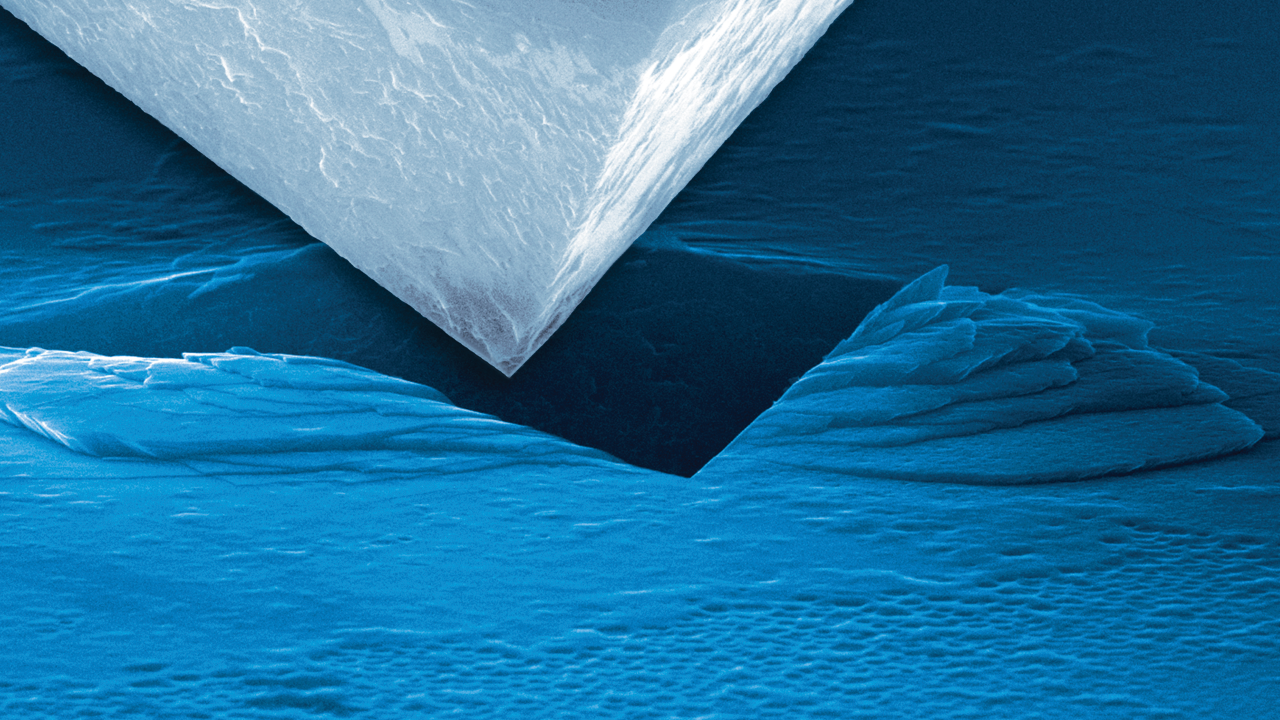Application Note: In-Situ High-Temperature Study of a Ni-based Superalloy and PtNiAl Bond Coat
High-Temperature Uniaxial Pillar Compression: Understanding Deformation Mechanisms in Superalloy Bond Coating Systems
Bond coatings are intermediate layers deposited on superalloy structures to enhance a number of critical performance criteria, including adhesion of a thermal barrier coating, limiting atomic migration of the base metal, and hot corrosion resistance. Synthesis of the Pt-Aluminide bond coating results in a compositionally and microstructurally graded structure, typically consisting of three discrete layers: an outer layer containing intermetallic PtAl2 and W-rich fine precipitates, an intermediate layer containing β-(Ni,Pt)Al, and an interior interdiffusion zone containing coarse precipitates in B2-NiAl matrix. Understanding the mechanical properties of both the bond coating and superalloy substrate at elevated temperatures is essential to advancing the development of these material systems for use in extreme environments.
KEYWORDS: High-Temperature Stage; Ni-Based Superalloy; PtNiAl Bond Coat; Extreme Environments; Micropillars; FIB Milling; Compression Testing; Stress-Strain Curves; Plasticity
Hysitron SEM PicoIndenter with 800°C Heating
To evaluate the mechanical properties of the bond coating and superalloy at elevated temperatures, a Hysitron® PI 88 SEM PicoIndenter® equipped with the 800°C heating option (Figure 1) was used to perform micropillar compression testing inside an SEM. In-situ mechanical testing allows for precise alignment of the tip with the sample as well as direct, real-time observation of the deformation processes. A side benefit of performing these tests in the SEM is that the high-vacuum environment limits the oxidation of the sample, especially at high temperatures, enabling the measurement of the true mechanical properties of the bond coating and superalloy materials
Please note that the PI 88 SEM PicoIndenter mentioned in this application note has been replaced by our latest model, the PI 89. With advanced features and improved performance, the PI 89 enables even more precise and reliable nanomechanical testing.
Testing Procedure
Micropillars in the Pt-rich and base superalloy regions were prepared using focused ion beam (FIB) milling. The micropillars were compressed using the Hysitron PI 88 equipped with a flat punch probe. Using the displacementcontrolled feedback mode of the system, the pillars were compressed to 5-12% strain at a strain rate of 10-2 s-1. Compression tests were conducted at room temperature (RT) as well as several elevated temperatures up to 800°C. Heating was achieved through closed-loop resistive heating of both the probe and sample. Real-time video was recorded for each test along with the load-displacement data. Synchronizing these two pieces of information allowed for test validation and facilitated a detailed study of the deformation across temperatures.
High-Temperature Uniaxial Pillar Compression
Bond Coating: The microstructure of the deformed pillar shows grain boundary sliding and rotation at temperatures above 700°C. Below this temperature, transgranular cracks can be clearly discerned in the microstructure. Also, intergranular surface cracks appear close to the top surface at 750°C and above. Plasticity in the bond coat is characterized by major strain hardening after yielding at RT and limited strain hardening at higher temperatures, as shown in the stress-strain curves in Figure 2. At 800°C, the modulus of the bond coating decreased by ~9% compared to room temperature. A more significant change was observed in the yield strength, which decreased by ~50% after heating to 800°C.
Superalloy: The significant load drops observed in the stress-strain curves of the superalloy (Figure 3) are associated with the formation of slip bands. A larger number of slip bands with greater step size can be observed on the pillar surface at 600°C compared to room temperature. At 600°C the measured yield strength and elastic modulus decreased by ~20% compared to room temperature.
Conclusions
Compared to room temperature, the yield strength and modulus of the bond coating were found to decrease by ~50% and ~9% at 800°C, respectively. Grain boundary siding and rotation dominate the plasticity at temperatures >700°C. Multiple slip bands were observed in the Ni-based superalloy. The density and severity of the slip banding increased with temperature. The Hysitron PI 88 equipped with the 800°C heating option couples quantitative mechanical characterization at high-temperature with real-time SEM imaging for a complete analysis of the deformation mechanisms in superalloy bond coating systems.
Bruker Nano Surfaces Division is continually improving its products and reserves the right to change specifications without notice. Hysitron and PicoIndenter are trademarks of Bruker Corporation. All other trademarks are the property of their respective companies. © 2017 Bruker Corporation. All rights reserved. AN1503, Rev. A0


